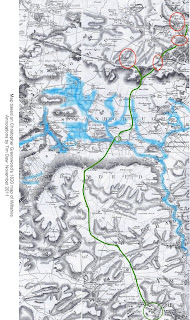I missed the release of this article in Sept 2015:
The sarsen stones of Stonehenge : Mike Parker Pearson,
Proceedings of the Geologists' Association
Abstract
© 2015 The Geologists' Association. Around 4500 years ago, some 80 large blocks of silcrete or 'sarsen' were erected at Stonehenge during its second stage of construction. Stonehenge is the only prehistoric stone circle to have its stones dressed, and debris from this stone-dressing has been found on the north side of the monument. Numerous locations have been proposed for the origin of these sarsens, from the immediate locality to more distant areas of east Somerset and north Wiltshire about 30. km (18 miles) away, but geological provenancing of Stonehenge's silcrete monoliths has so far been largely unsuccessful. The suspected sources are, however, much closer than those of Stonehenge's 'bluestones', over 200. km (125 miles) away in west Wales. That said, the sarsens are much heavier than the 1-2. tonne bluestones. For more than 300 years, researchers have suspected that the main sources of Stonehenge's sarsens were deposits of silcrete on the highest points of the Marlborough Downs, 30. km (18 miles) north of Stonehenge. Antiquarian records of a group of sarsens at Clatford Bottom, at the foot of the Downs, suggest that these may have been abandoned in transit to Stonehenge.

I haven't seen the full article yet but I'm pleased to see the similarity to mine and other's proposed route which I
published in 2011, which is generously acknowledged as a source in the paper.
This blog started as I tried to work out the sarsen route and came to realise that Atkinson's route was a nonsense. So to see others coming to the same conclusion is gratifying. Maybe one day the guidebooks will be changed. (Mike has previously proposed this route in his Stonehenge Book)
I am not quite sure why the overland bluestone route he shows follows the Atkinson route when it reaches Wiltshire. I'm very pleased to see it follow my favoured A40 route but when it gets to Gloucester the obvious route is to follow the route that is now the road to Marlborough and then the "sarsen route" to Stonehenge. Though there is the scarp at Birdlip to consider so maybe follow the A40 to Cheltenham and then loop round? It would be worth a map based exercise and visit to consider the options.
And here is a picture of Mike and I herding cattle across the Kennet at Clatford when he was excavating near by.
(Click any to embiggen)




















